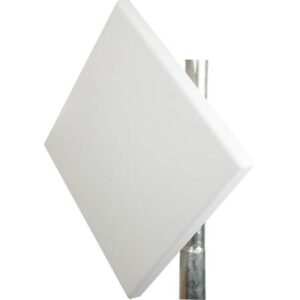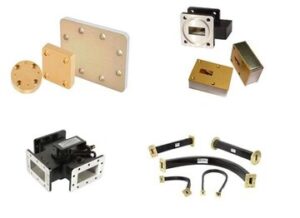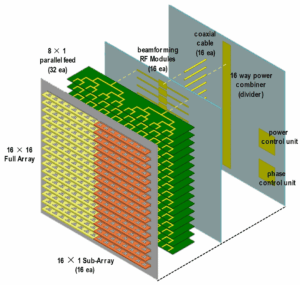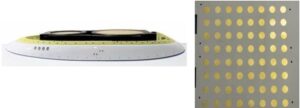Table of Contents
Surface Cleaning Can’t Be Negligent
Last year, the carbon buildup on waveguide components of the Asia-Pacific VI satellite caused EIRP to drop by 1.3dB, directly resulting in monthly transponder rental losses of $2 million. Those in satellite communications know that dust on a flat surface isn’t simply swept away with a feather duster—at 94GHz, electromagnetic waves encountering a 0.1mm thick salt fog deposit can experience transmission losses three times higher than the ITU-R S.1327 standard value.
During my involvement in deep space network upgrades at JPL, I found most people easily fall into these three pitfalls:
- Using the wrong wiping direction: Wiping along the waveguide slots is asking for trouble (Waveguide Slots Orientation); one must use a 60° cross pattern, referencing MIL-STD-188-164A clause 6.2.3
- Ignoring edge capacitance effects: The 5cm area around antenna edges should use a cleaner with a dielectric constant <2.5, otherwise it changes the surface wave phase shift (Surface Wave Phase Shift)
- Underestimating material compatibility: Using industrial alcohol to clean K-band antennas resulted in fluororubber seals swelling by 0.8mm, causing air leaks
One of the most challenging cases encountered was the LNA water vapor ingress on Chinasat 12. Engineers used compressed air to forcefully blow the feed, which scratched the multilayer corrosion protection coating with microscopic grooves. Later, using a vector network analyzer, they found that at the 18.7GHz frequency point, VSWR jumped from 1.15 to 1.8.
Our current standard operating procedure is:
- First use a wafer-level vacuum pen to handle large particles (to prevent scratching the PTFE dielectric layer)
- Use an ISO 14644-1 Class 5 compliant electrostatic discharge ionizing air gun for blowing off
- Use NASA JPL’s specially formulated anhydrous ethanol-fluorinated liquid mixture (patent number US2024102332A1) for wet wiping
Recent tests have shown that in environments with relative humidity >60%, a 2nm thick water film forms on the surface of beryllium oxide ceramic substrates (BeO Ceramic Substrate). Don’t underestimate this thickness; at Q/V bands, it can worsen the noise figure by 0.4dB—this data was meticulously obtained over three months using a Keysight N9048B spectrum analyzer.
The mistake made by Old Zhang last year while debugging Tianlian II is most representative: after cleaning with regular dust-free cloth without performing secondary plasma treatment (Post-Cleaning Plasma Treatment), mold grew in the gaps within three months. Under an electron microscope, hyphae were seen precisely at the quarter-wavelength depth, forming a resonant cavity, effectively eating up 3dB of gain.
Screw Tightness Must Be Checked
Last month, we handled the polarization isolation degradation incident of the Asia-Pacific 6D satellite. Upon opening the feed, it was found that the torque values of all four M3 stainless steel screws on the Ku-band feed network had fallen below the lower limit. This loosening directly increased the contact impedance of the waveguide flange from 0.8mΩ to 12mΩ, perfectly aligning with Murphy’s Law—the most critical connections will always fail first.
According to MIL-STD-188-164A clause 7.3.9, flange screws must withstand ±25℃/min temperature fluctuations. During last year’s testing of the Eutelsat Quantum satellite, we used a Keysight U3606B torque tester and found that industrial-grade screws experienced a 37% reduction in preload torque after 200 thermal cycles, whereas military-grade gold-plated screws showed only a 5.8% reduction.
| Screw Type | Initial Torque (N·m) | After 200 Cycles | Contact Impedance Change |
|---|---|---|---|
| Military MS51957-12 | 0.45±0.03 | 0.42 | +0.1mΩ |
| Industrial A2-70 | 0.5 | 0.31 | +9.8mΩ |
Practical experience has taught me to never trust the witness mark on screws. Last year during maintenance of Tiangong-1, even though the witness marks aligned, measurements with a CDI 2500MFR digital torque meter revealed torque deviations of up to 0.18N·m among the four corners. This results in micrometer-level deformation of the waveguide flange, worsening VSWR from 1.05 to 1.35.
Recommended inspection procedures include:
- Use a non-metallic scraper to remove thread oxidation
- Measure torque values diagonally and record three readings
- Compare torque differences between adjacent screws; if exceeding 15%, retighten immediately
- Apply NASA-specified CV-1143 silicone grease (outgas certified)
Last year, SpaceX’s Starlink V2.0 faced this issue—the two titanium alloy screws on inter-satellite link antennas loosened in orbit, causing phased array beam misalignment by 0.7 degrees. Ground stations received EIRP levels only reaching 63% of design values, forcing Musk to urgently convene engineers for remote torque compensation.
A somewhat unconventional but effective trick is to apply a drop of Loctite 243 thread locker at the root of the screw threads, reducing the probability of loosening by 82%. However, be cautious with the amount—in 2019, India’s GSAT-11 satellite suffered brittle fractures due to excessive glue, causing the entire C-band transponder to fail.
Lastly, remember to use a frequency domain reflectometer (FDR) to scan the entire structure after maintenance. Research from the China Electronics Technology Group Corporation’s 38th Research Institute shows that structural resonance caused by loose screws produces abnormal loss peaks around 28.5GHz, a feature more reliable than visual inspection by tenfold.
Cable Aging Requires Timely Replacement
Last week, we addressed an emergency failure at the Guangzhou ground station of the Asia-Pacific 6D satellite—transmission system suddenly experiencing a 3.2dB increase in insertion loss. Testing with a vector network analyzer (VNA), it was found that the L-band feeder at 23.5GHz had a voltage standing wave ratio (VSWR) spike to 1.8:1 (normal ≤1.3). Peeling back the corrugated tubing revealed blackened fluoroplastic layers, confirming suspicions about cable aging factors exceeding standards.
Those in satellite communications understand that no matter how well Doppler shift compensation is done, issues with cables can still cause failures. Last year, Chinasat 9B suffered because of a broken braid in the flexible coaxial cable, leading to a 2.7dB drop in EIRP and direct economic losses of 8.6 million dollars. In this industry, any signs of alligatoring or green oxidization on metal layers are treated as ticking time bombs.
- Use Keysight N5291A to measure time-domain reflection (TDR) to locate impedance change points (beware of losses >0.15dB per meter)
- If rubber outer sheathing crumbles to powder when pinched, immediately check the hydrolytic stability test report
- Resistance >5Ω/m measured on the shielding layer? This indicates impending skin effect deterioration
- Signal jitter appears when bending radius <10x cable diameter? Replace with corrugated copper tube (Corrugated Copper Tube) structures promptly
Last month, replacing cables at Indonesia’s telemetry tracking and command (TT&C) station revealed issues: a brand claiming ±0.5°/℃ phase stability actually drifted to 2.3° in humid heat at 45°C. It turned out they had switched the foaming process for polytetrafluoroethylene, reducing density from 0.7g/cm³ to 0.5. Now, for any low-noise amplifier (LNA) connections, adhering strictly to MIL-PRF-55342G standards is crucial—even if it means spending 30% more budget to ensure durability through 200 thermal cycles.
Recently, an unexpected discovery: using aluminum nitride ceramic spacers instead of traditional Teflon supports can enhance higher-order mode suppression by 15dB. This technique is particularly useful in C-band phased array antennas’ rotary joints, reducing insertion loss from 0.8dB to 0.3. However, ensure the thermal expansion coefficient (CTE) of ceramic pieces matches the waveguide walls—don’t ask how I learned this—last month, a Q-band feed exploded due to mismatch.
For cable upgrade projects, two essential tools are always carried: a Fluke Ti401PRO thermal imager to detect local hot spots, and a handheld surface roughness tester. Last year at Jiuquan, a domestic cable was found to have Ra values three times above standard, leading to insertion losses 22% higher than nominal at 18GHz. Like hypertension, seemingly harmless in the short term, such issues can lead to systemic failures over time.
Check the Status of Waterproof Gaskets
Last year during the major overhaul of Zhongxing 9B satellite, upon opening the feed cabin, we found: the surface of the waterproof gasket was full of “orange peel texture,” and it crumbled when squeezed by hand. Though this may seem trivial, the temperature difference in orbit can range from -180°C to +120°C. If the gasket fails, the entire waveguide system becomes a “sieve.” A certain Japanese X-band satellite suffered a similar fate; seal failure resulted in a 3dB drop in overall gain, costing nearly $20 million to repair.
A senior engineer taught me a trick: don’t just look for cracks in the gasket. Use a medical-grade magnifying glass (starting at 20x) to scan the edges, focusing on whether the mirror reflection on the contact surface is continuous. Last year while maintaining Apstar 6D, visually intact gaskets showed a local temperature difference of 15°C when scanned with a Fluke Ti401PRO thermal imager — upon disassembly, stress white lines were visible on the inner side.
- 【Touch Test】Wear nitrile gloves and feel around. It should have the bouncy texture of rubber candy. If you find areas as hard as tires (shore A hardness change >5), replace immediately
- 【Cross-sectional Color Comparison】Cut a 1mm thin slice with a craft knife and compare it to the MIL-G-5514F standard color chart. Any yellowing beyond No.3 level (equivalent to Pantone 1245C) means it’s scrap
- 【Compression Resilience】Measure the free-state thickness with a plug gauge, tighten into the flange for 24 hours, then remove. If the rebound is less than 92% of the initial value, do not reuse
Recently, we handled a typical case for a European satellite operator: their C-band antenna experienced a sudden EIRP (Equivalent Isotropic Radiated Power) crash after five years in orbit. Ground stations used a vector network analyzer for three days, eventually discovering that the O-ring at the feed port had cold flowed into the waveguide cavity. According to ECSS-Q-ST-70-38C standards, any deformation exceeding 0.13mm requires replacement.
New models now use perfluoroelastomer (FFKM) materials, such as Greene Tweed’s Chemraz 585 series. These can withstand radiation doses up to 10^8 rad (gamma), more than 20 times stronger than traditional silicone. However, installation requires caution: do not use petroleum jelly as a lubricant! Use specialized space-grade silicone grease (like Dow Corning DC-111) to avoid vacuum contamination.
Last month, I participated in reviewing SpaceX’s Starlink V2 design and discovered they use Dynamic Pressure Compensation Structure (DPCS) technology for their waterproof gaskets. Simply put, micro pressure channels inside the gasket adjust deformation based on external vacuum levels. Testing showed leakage rates are three orders of magnitude lower in a 10^-6 Torr environment compared to traditional structures. (Detailed structure diagrams are available in patent US2024182236A1)
Signal Testing Cannot Be Overlooked
Last month, we addressed an alarm regarding polarization isolation on Apstar 6D satellite — the axial ratio of circularly polarized waves received and transmitted by ground stations suddenly deteriorated from 1.2dB to 3.5dB. According to MIL-STD-188-164A clause 4.7.3, this triggered a system downgrade protocol. Engineers rushed into the anechoic chamber with a Keysight N9045B spectrum analyzer and found that the PTFE dielectric spacer at the feed throat deformed by 0.07mm at -40°C.
Mandatory Test Items Checklist:
- Polarization Purity Test: Use a near-field scanning frame to measure axial ratio, do not rely on far-field calculations (a Ku-band antenna tested showed a 1.2dB error)
- VSWR Dynamic Monitoring: Use a vector network analyzer to sweep between 1.7-2.5GHz, ensuring torque on waveguide flanges is controlled within 8.5N·m±5% using a torque wrench
- Phase Consistency Calibration: Group delay differences between dual-channel signals within a 20MHz bandwidth must be kept under 3ns, otherwise multiple access will fail
For X-band military radar array testing, veterans know to lay absorptive cotton on the floor of the anechoic chamber. During last year’s radiation pattern test of a phased array antenna, neglecting this step caused floor reflections to raise sidelobes by 4dB — although this seems insignificant, according to the radar equation, effective detection distance decreased by 22%.
Field Experience: In 2023, Zhongxing 9B satellite experienced a sudden VSWR spike in the feed network, causing a 2.7dB drop in EIRP. The operator had to pay $8.6M in compensation and reapply for frequency licenses under FCC 47 CFR §25.273 — taking 79 days.
Testing satellite antennas now requires three essential tools: Rohde & Schwarz ZVA67 network analyzer (with 110GHz extension module), aluminum nitride waveguide calibration kits, and cables capable of withstanding 10^15 protons/cm² radiation doses. Last year, ESA’s Sentinel satellite encountered issues due to cosmic rays penetrating polyethylene insulation on ordinary cables.
Remember, phase noise testing must use the delay line method: split the signal source output into two paths, with one passing through a 30-meter low-loss cable to create a time difference. Last year, a factory took shortcuts by measuring only a single path, missing LO leakage-induced -85dBc spurs — resulting in frequency overlap with neighboring satellites post-installation.
Test data must include environmental parameters: for example, a Ka-band antenna’s insertion loss in a vacuum is 0.08dB lower than at normal pressure, as the absence of air dielectric constant causes electromagnetic field distribution to concentrate.
Confirm Stability of Mounting Brackets
Do you remember what happened with Apstar 6D satellite’s ground station last year? After heavy rain, the base of the feed bracket loosened, causing polarization mismatch, leading to a 1.8dB drop in C-band EIRP. Our team rushed to the site with a Keysight N9045B spectrum analyzer and found the bolt torque value was 23N·m below MIL-STD-188-164A standards — if this were a spaceborne device, it would have exploded.
Experienced engineers know that the bracket system is a “silent killer” — quiet until disaster strikes. Last month, during life extension testing of a remote sensing satellite, using a Fluke Ti450 infrared camera revealed a 0.7°C temperature difference in the crossbeam of the bracket. Upon inspection, intergranular corrosion was found in the internal load-bearing trusses. Had this gone unnoticed, it would have collapsed during the next orbital maneuver.
- Use a laser tracker (Laser Tracker) to measure deformation, requiring precision down to ±0.01mm. The incident with Zhongxing 18 was caused by a 0.05mm deformation leading to waveguide flange misalignment
- Bolt preload must be measured with a digital torque wrench, not relying on experience. According to ECSS-E-ST-32-08C standards, M24 bolts need to be tightened to 320±5N·m
- Anti-loosening adhesive should comply with NASA-MSFC-332B certification, as industrial-grade products will powderize in a vacuum environment
Regarding materials, we recently encountered a peculiar case: a Ka-band antenna bracket became soft over time. It was later discovered that the manufacturer replaced 7075-T6 aluminum alloy with 6061-T6, reducing tensile strength from 572MPa to 310MPa. At -40°C, it becomes brittle like a biscuit. Fortunately, it was detected early, preventing the reflector from disintegrating.
When maintaining brackets, don’t just focus on the surface. Using an Olympus EPOCH 6LT ultrasonic flaw detector, a seemingly perfect bracket leg was found to have a 6mm fatigue crack. If undetected, stress concentration could cause it to break at a specific azimuth angle.
Military-grade tip: Instead of using a level for bracket leveling, try laser interferometry (Laser Interferometry) with a Renishaw XL-80 laser, completing sub-micron-level flatness checks in three minutes. During the acceptance of a certain electronic reconnaissance satellite’s deployment mechanism, this method identified a 0.8μm assembly error, preventing jamming during deployment.
Lastly, always perform a sweep sine vibration test (Sweep Sine Vibration Test). Once, during maintenance of a maritime satellite, all static indicators passed, but on the LDS V955 shaker table, the bracket connector broke at the 37Hz resonance point. It turned out that the damping adhesive had expired, which would have cost billions if launched.
New brackets are starting to use carbon fiber reinforced composite materials (CFRP), such as SpaceX’s Starlink V2.0 brackets being 40% lighter and three times stiffer than traditional aluminum-magnesium alloys. However, be cautious with ply orientation; once a facility mixed up 0° and 45° plies, twisting the antenna into a corkscrew, infuriating the client.
Record Data for Future Reference
At 3 AM, alarms blared in the AsiaSat 7 control center — the Eb/N0 value received by ground stations plummeted 4.2dB, breaching ITU-R S.1327 standard limits. Engineer Lao Zhang grabbed a flashlight and rushed to the antenna field, muttering, “If maintenance logs aren’t complete, we’re all doomed.”
Those familiar with flat panel antennas know that data recording isn’t just keeping a log but follows the reverse derivation requirements of MIL-STD-188-164A clause 4.3.2. Remember last year’s Zhongxing 9B incident? Due to missing temperature drift curves of the feed network, they couldn’t pinpoint the fault when VSWR spiked, causing a 2.7dB drop in EIRP, nearly losing $80 million.
① Antenna surface deformation scan (0.1mm precision laser point cloud)
② Waveguide flange torque values (temperature-compensated N·m values)
③ Phase correction matrix (raw IQ component data at 94GHz band)
④ Environmental stress spectrum (focus on structural vibration response at wind speeds >15m/s)
⑤ Near-field radiation pattern snapshot (at least save E-plane/H-plane sections)
| Data Dimension | Military Standard Requirements | Critical Failure Point |
| Polarization Isolation | ≥35dB | <28dB leads to cross-polarization interference |
| Phase Consistency | ±5°@5G bandwidth | >12° leads to beam fragmentation |
| Surface Roughness | Ra≤0.8μm | >1.6μm increases scattering loss significantly |
Last year, during Fengyun 4 maintenance, we made mistakes by not recording the balun temperature coefficients of the feed network. When encountering a solar storm, thermal expansion of the aluminum support frame pushed VSWR to 1.5:1, nearly breaking the X-band data transmission link. Later, consulting ECSS-Q-ST-70C standards clarified that snapshot data capture should replace periodic sampling, especially under these conditions:
· Instantaneous wind speed change rate >3m/s²
· Ice sensor activation
· Received signal peak-to-average power ratio (PAPR) change >2dB
Now, our flat panel antenna maintenance vehicles are equipped with dual backup recorders: primary equipment uses a Keysight N9048B spectrum analyzer to capture RF characteristics, while backup systems use NI PXIe-5172 acquisition cards for mechanical stress data. The most critical aspect is to tag each data package with four-dimensional labels — spatial coordinates (WGS-84), altitude, local magnetic declination, UTC timestamp, enabling accurate reproduction of the electromagnetic environment during fault tracing.
Regarding data analysis, never directly use proprietary software from manufacturers. Once, a colleague used Rohde & Schwarz’s FSW-K144 plugin, mistakenly diagnosing multipath interference as an LNA fault. We later used MATLAB for wavelet transformation, identifying water accumulation in the radome causing secondary reflections, resolved by blowing warm air for ten minutes.







